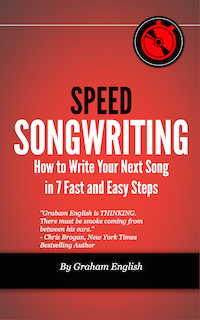
Four notes.
That’s all it takes to create the raw material for a hundred songs.
Sound ridiculous? It’s not. It’s math. And better yet—it’s usable, repeatable, and wildly effective for getting out of a creative rut.
You don’t need a giant chord library, a 7-octave vocal range, or a PhD in music theory. You just need four notes, a little curiosity, and a willingness to experiment like a mad scientist in a lab made of beats and melodies.
Let’s break it down.
Why Four Notes?
Because four is small enough not to overwhelm you, and big enough to unlock thousands of melodic combinations.
Mathematically, if you have four notes and allow repeats, you can build 256 unique four-note sequences.
(That’s 4 x 4 x 4 x 4 = 256. If you limit repeats or order, the number changes, but for our purposes, we’re keeping it simple and usable.)
Now imagine each of those four-note combinations as a melodic seed.
Not a full song. Just a fragment. But fragments are how real songs start.
Step 1: Choose Your Four Notes
Don’t overthink this. Just pick four notes from a scale—any scale. If you’re stuck, start with the C major scale (C, D, E, F, G, A, B).
Here are a few additional starter sets you can try:
- C, E, F, G – bright, major-key friendly
- D, F, A, C – moody and flexible (D minor 7, technically)
- G, A, B, D – folk-pop gold
- E, G, Bb, D – jazzy, colorful, a little mysterious
Each of these combinations contains enough tension, release, and variation to craft dozens of ideas.
Step 2: Create 5 Short Melodies Using Only Those Notes
Set a timer for 10 minutes.
Now, compose five short melodic phrases using only the four notes you chose.
Don’t worry about chords yet. Don’t worry about lyrics. Don’t even worry if it “sounds like a song.” Your job is to sketch. To doodle. To spit out fragments like you’re tossing darts in the dark.
Here’s how it might look using C, E, F, G:
- Melody 1: C – C – E – G
- Melody 2: G – F – E – C
- Melody 3: C – E – F – F
- Melody 4: E – F – G – C
- Melody 5: F – E – C – G
Play them fast, slow, staccato, legato, swung, or robotic. Change the rhythm—accent different notes.
Each variation gives it a new identity.
Step 3: Choose a Favorite and Build It Out
One of those short melodies will probably grab you more than the others.
Run with it.
Here’s what to do next:
- Repeat it with a twist (change one note, or move it up/down an octave).
- Add a second phrase as a response (same rhythm, different notes).
- Create contrast by inverting the rhythm or flipping the contour (if it goes up, now go down).
- Layer it with chords. Try simple triads underneath your melody to see what harmonies emerge. (If your melody is mostly C, E, and G—start with a C major chord. If it uses E, G, and Bb—try an E diminished or G minor.)
This is how real songs take shape—by stretching, repeating, and developing simple ideas.
The Template: Your 4-Note Song Sketch Sheet
Here’s a quick exercise you can repeat every day:
- Pick 4 notes from any scale.
- Write 5 melodic phrases using only those 4 notes.
- Choose 1 to develop into a full 8-bar melody.
- Experiment with rhythm, chords, and lyrics until it becomes a full section.
You can do this in under 30 minutes. And if you repeat it daily for a month, you’ll have:
- 30 four-note sets
- 150 melody sketches
- 30 stronger melodic ideas
- And at least 10 that are probably song-worthy
Not bad for an exercise you can run on autopilot.
Real-World Example: “Shape of You” by Ed Sheeran
Listen to the chorus melody:
It uses mostly C♯, B, G♯, and E (okay, it also sneaks in F♯ as a passing tone—but it only takes four notes to generate the core melodic idea).
Four notes.
But with rhythm, repetition, and phrasing, it becomes one of the most recognizable choruses of the decade.
It’s not the notes. It’s what you do with them.
Final Thoughts: Creativity Loves Constraints
When you limit your options, your creativity kicks into gear.
Don’t wait for divine inspiration. Use this constraint-based system to generate your own melodic DNA—fast, fun, and full of surprise.
Some of your most original ideas will come from giving yourself fewer choices.
So try it right now:
Pick 4 notes.
Make 5 melodies.
Turn 1 into a song.
No overthinking. No perfection. Just the math of melody—and your willingness to follow it where it leads.

Enter your first name and email address below and click “GET ACCESS NOW!” to get the Speed Songwriting Cheat Sheet delivered to your inbox!
We guarantee 100% privacy. Your information will not be shared.

Do you have a book for sale?
I don’t like sitting in front of videos, I like to read.